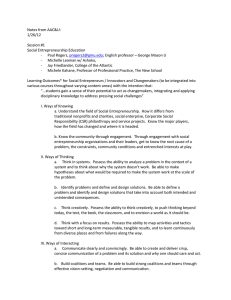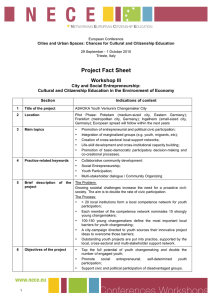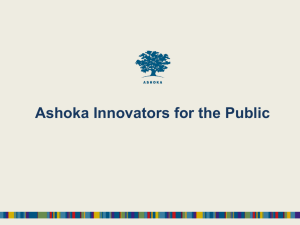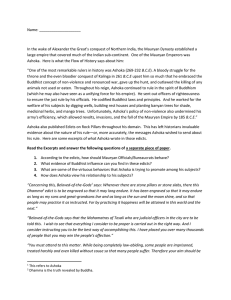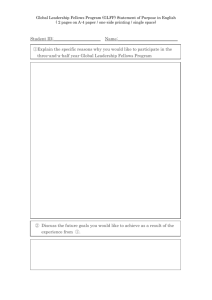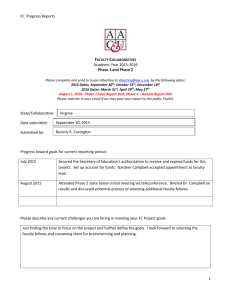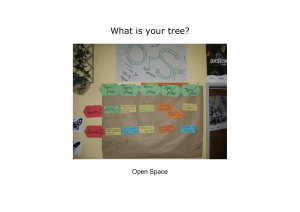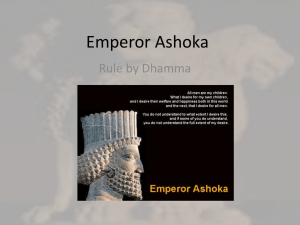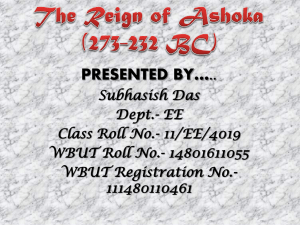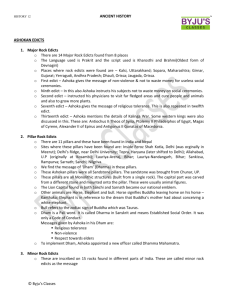On April 30th, I handled my final paper for my elective course on
advertisement
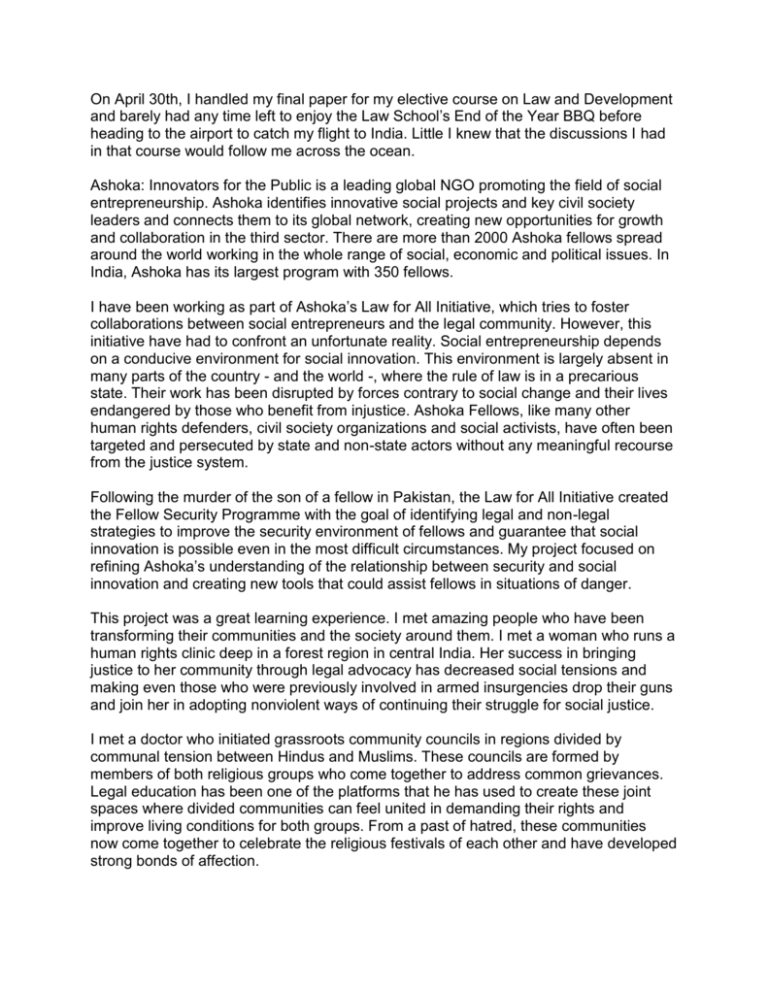
On April 30th, I handled my final paper for my elective course on Law and Development and barely had any time left to enjoy the Law School’s End of the Year BBQ before heading to the airport to catch my flight to India. Little I knew that the discussions I had in that course would follow me across the ocean. Ashoka: Innovators for the Public is a leading global NGO promoting the field of social entrepreneurship. Ashoka identifies innovative social projects and key civil society leaders and connects them to its global network, creating new opportunities for growth and collaboration in the third sector. There are more than 2000 Ashoka fellows spread around the world working in the whole range of social, economic and political issues. In India, Ashoka has its largest program with 350 fellows. I have been working as part of Ashoka’s Law for All Initiative, which tries to foster collaborations between social entrepreneurs and the legal community. However, this initiative have had to confront an unfortunate reality. Social entrepreneurship depends on a conducive environment for social innovation. This environment is largely absent in many parts of the country - and the world -, where the rule of law is in a precarious state. Their work has been disrupted by forces contrary to social change and their lives endangered by those who benefit from injustice. Ashoka Fellows, like many other human rights defenders, civil society organizations and social activists, have often been targeted and persecuted by state and non-state actors without any meaningful recourse from the justice system. Following the murder of the son of a fellow in Pakistan, the Law for All Initiative created the Fellow Security Programme with the goal of identifying legal and non-legal strategies to improve the security environment of fellows and guarantee that social innovation is possible even in the most difficult circumstances. My project focused on refining Ashoka’s understanding of the relationship between security and social innovation and creating new tools that could assist fellows in situations of danger. This project was a great learning experience. I met amazing people who have been transforming their communities and the society around them. I met a woman who runs a human rights clinic deep in a forest region in central India. Her success in bringing justice to her community through legal advocacy has decreased social tensions and making even those who were previously involved in armed insurgencies drop their guns and join her in adopting nonviolent ways of continuing their struggle for social justice. I met a doctor who initiated grassroots community councils in regions divided by communal tension between Hindus and Muslims. These councils are formed by members of both religious groups who come together to address common grievances. Legal education has been one of the platforms that he has used to create these joint spaces where divided communities can feel united in demanding their rights and improve living conditions for both groups. From a past of hatred, these communities now come together to celebrate the religious festivals of each other and have developed strong bonds of affection. I have also talked to a couple who have implemented a system of social audit of India’s National Rural Employment Guarantee Act. This act commits the government to the creation of new jobs in rural areas. Unfortunately, corruption at the local level of government has seriously undermined the potential of this initiative. The process of social audit guarantees that the community is actively involved in the promotion of transparency and accountability in governance, demonstrating the enormous potential of grassroots initiatives and civil society in responding to deficits in good governance. Environmental protection, health, land rights, human traffic, education, civic engagement, police reform, economic rights. I conducted more than 30 interviews where I had the chance to learn from real heroes behind India’s development story. Each conversation was a private lesson on development strategies and the role of law in hindering or promoting social innovation. Memories abounded from my class discussions on law and development when Professor Mariana Prado guided us through many of the same issues that were raised in my meetings. However, more than anything, I learned about the personal costs of those who invest their lives in promoting a better future. These stories of successes were often followed by accounts of repression, constant harassment and violence. At times, these stories addressed abuses of power outside the rule. However, even more disturbingly, I heard stories of how officially sanctioned power has been used to stifle social discontent and create an environment were human rights violations can happen with impunity. A shocking example is India’s Armed Forces Special Powers Act, a draconian act providing virtual immunity to members of the armed forces in regions affected by uprisings and insurgencies. The army is authorized to shoot to kill based on mere suspicion and arrest anyone without warrant. According to one of my interviewees, a human rights lawyer from the state of Manipur, the legal regime currently existing in regions of India allows the government and army to practically conduct its “war” against insurgents beyond the control of either human rights law and international humanitarian law. I met many people from the Northeast India who had their lives defined by this act. Hundreds have been killed and thousands wounded by the Indian army and the police without any possibility of legal redress or other systems of accountability. This act reminded me that democracy cannot simply refer to a rule by laws, but rather a commitment to a principled rule of law. I could tell so many other stories. I feel inspired and empowered by them, more eager than ever to put my legal education to good use. I am very grateful for the opportunity that the International Human Rights Program has given me. I could not have asked for a better introduction to the realities of human rights work.

